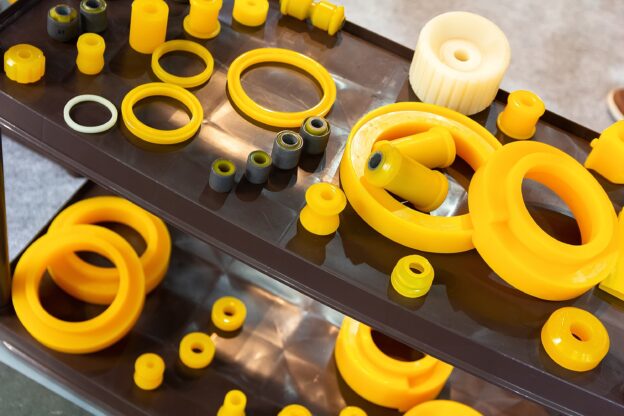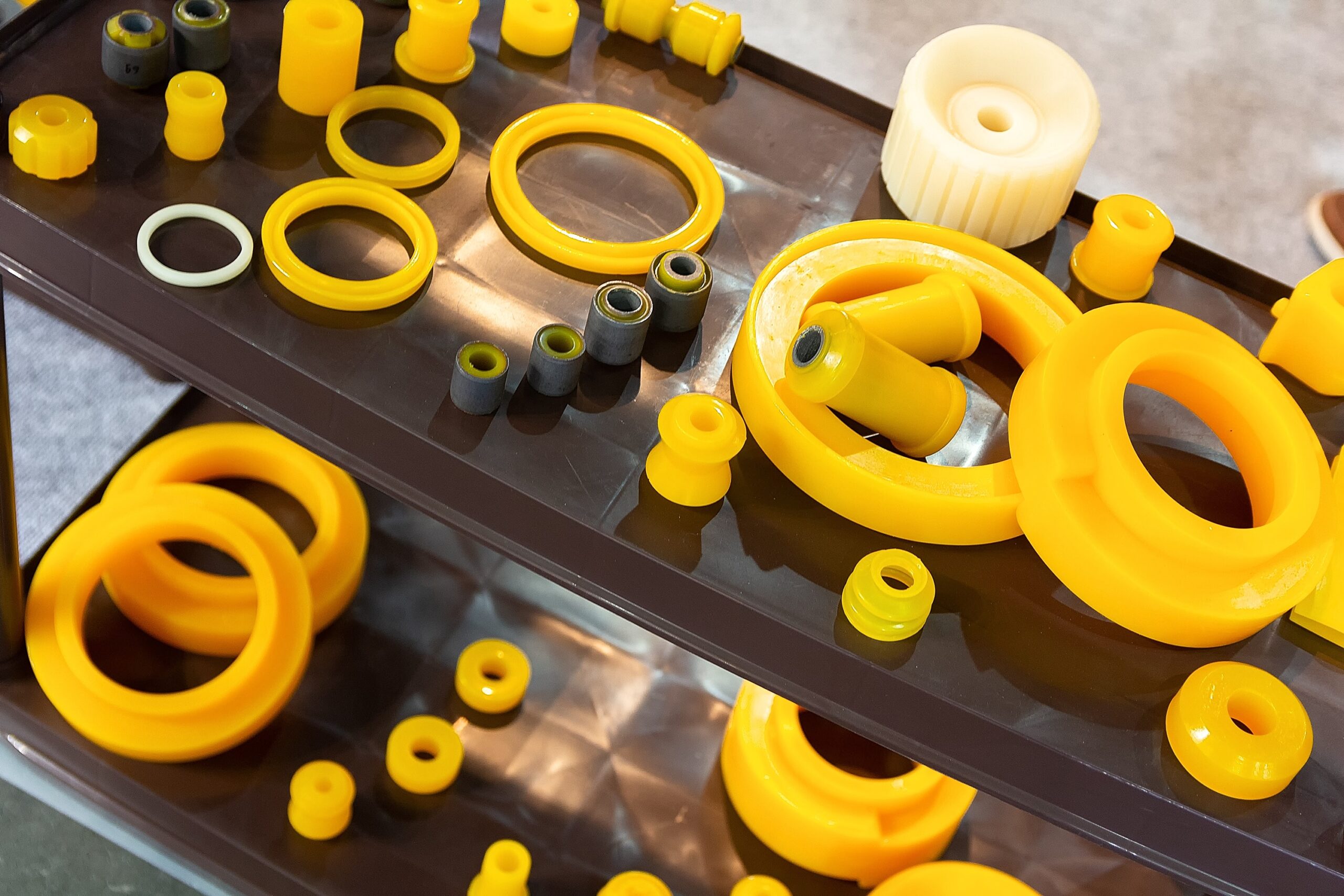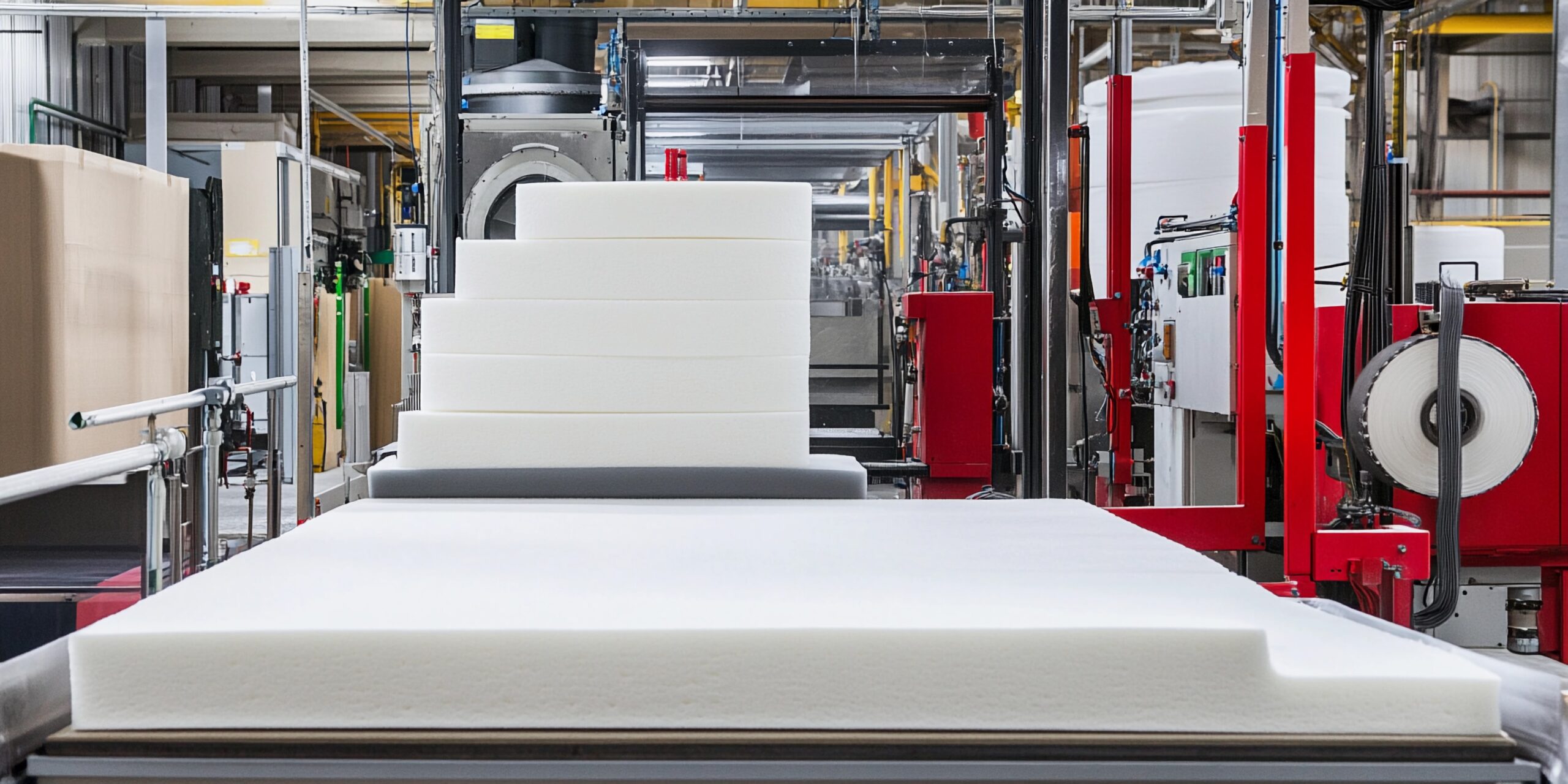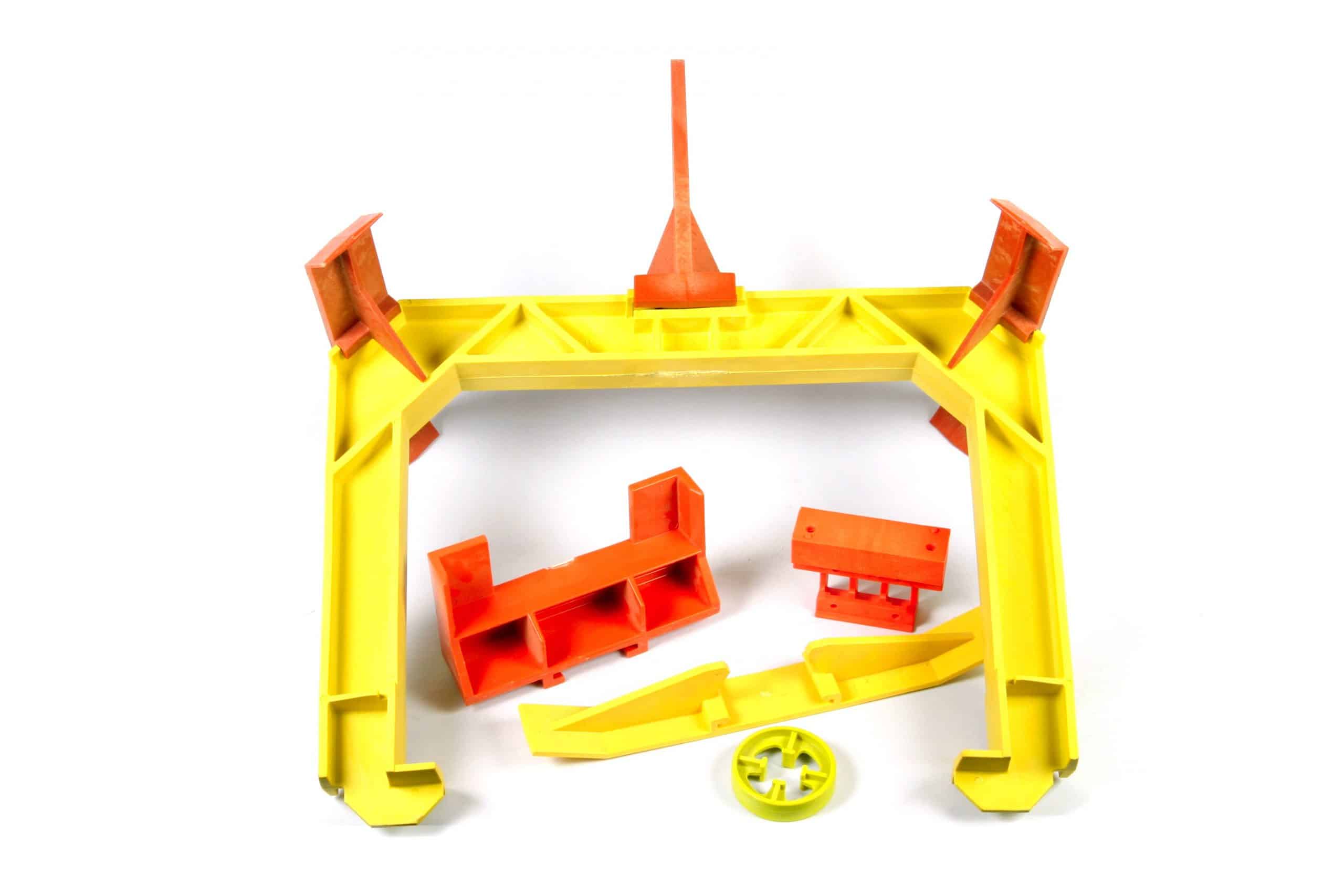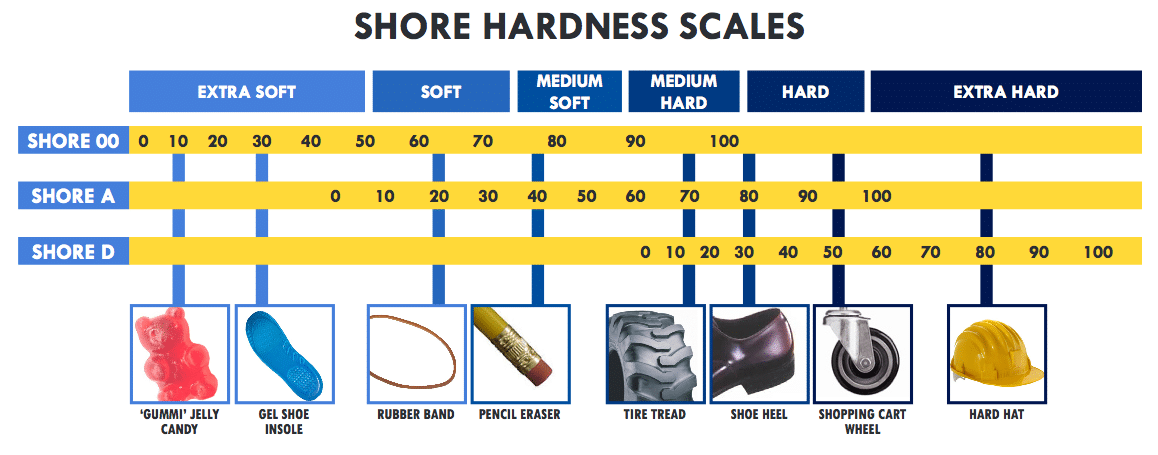Polyurethane is a highly adaptable material used across a wide range of industries, from automotive and construction to furniture and consumer goods. Its popularity stems from its durability, flexibility, and ability to be formulated in various forms—rigid, flexible, or foam. This comprehensive guide offers a detailed overview of how polyurethane products are manufactured, highlighting each stage of the process from raw material selection to final fabrication.
Key Takeaways
- Polyurethane manufacturing relies on the reaction between polymeric isocyanates and polyols, with catalysts and blowing agents shaping the final product’s properties.
- The production process involves critical steps such as mixing, molding, curing, and finishing to ensure high-quality polyurethane products tailored to specific applications.
- Sustainability initiatives are becoming increasingly important in the polyurethane industry, focusing on recycling methods and eco-friendly practices to reduce waste and environmental impact.
With over four decades of industry experience and a steadfast commitment to quality, Uniflex, Inc. has the capabilities and expertise to deliver reliable, cost-effective polyurethane solutions tailored to your exact needs. Whether you’re seeking rapid prototyping, high- or low-volume production, or comprehensive engineering and machining support, our team is equipped to move your project forward efficiently and on time. Ready to get started? Contact Uniflex, Inc. today at 248-486-6000 to request a free quote or to speak with one of our specialists about your custom polymer requirements.
👉Also Read: Revolutionizing Automotive Performance: The Role of Custom Molded Polyurethane
The Chemical Basis of Polyurethane
The bedrock of polyurethane manufacturing lies in its chemical reactions. At the heart of this process is the reaction between polymeric isocyanate and polyol, which forms the backbone of all cast urethane products. These components are meticulously selected to ensure the desired properties in the final product. Polyols, often hydroxyl-terminated polyethers or polyesters, react with polymeric isocyanates to create long chains of polyurethane material, which can be further manipulated into various forms.
Catalysts play a pivotal role in this reaction, ensuring that the process proceeds at an optimal rate and that the final polyurethane material exhibits the necessary characteristics. Blowing agents, another critical component, help produce polyurethane foam by creating a cellular structure within the material. This not only enhances the material’s insulation properties but also reduces its weight, making it ideal for applications where lightweight and chemical resistance are paramount.
Production Process Overview
The production of polyurethane is a fascinating blend of chemistry and engineering. It begins with an exothermic reaction between isocyanates and polyols, which occurs readily at room temperature. This initial reaction forms the bulk polymer, a critical first step in the manufacturing process. Catalysts are used to control the reaction rate and manage the formation of byproducts, ensuring a high-quality end product.
Once the bulk polymer is produced, it undergoes exposure to various chemicals that transform it into the desired form. This phase is crucial as it determines the final properties of the polyurethane material. The polymer is then processed into its final form through a series of steps, including mixing, molding, and curing. Each of these steps is meticulously controlled to ensure that the finished product meets the highest standards of quality and performance.
This inside look at the production process reveals the complexity and precision involved in manufacturing polyurethane products. From low-volume production runs to large-scale operations, each step is carefully managed to produce a wide array of polyurethane products that meet the diverse needs of various industries.
Mixing Techniques
Effective mixing techniques are the cornerstone of high-quality polyurethane production. The homogeneity and quality of the final product depend heavily on how well the chemical components are mixed. There are several mixing techniques used in the industry, ranging from mechanical mixing to more advanced methods that ensure uniform distribution of the components.
Uniform mixing is essential for achieving the desired properties in polyurethane products. Whether it’s ensuring the right level of flexibility in foam or the necessary hardness in elastomers, the mixing process plays a crucial role. Advanced techniques help eliminate air bubbles and ensure that additives are evenly distributed, which is vital for the performance and durability of the final product.
👉Also Read: Top Solutions to Protect Your Mining Equipment with Custom-Made Polyurethane Parts
Molding Methods
Molding is where the magic happens in polyurethane manufacturing, transforming liquid mixtures into solid forms with precise shapes and dimensions. Polyurethane molding is characterized by its ability to produce complex geometries and tight tolerances, making it suitable for various industries. One of the most common methods is open-cast molding, which allows for the production of complex shapes under low pressure.
In open-cast molding, polyurethane is poured into molds, which can be either open or closed with bleed gates. These gates allow air to bleed out during the injection process, ensuring efficient shaping and minimizing defects. Other molding processes include transfer compression molding, vacuum casting, and blow molding, each with its unique advantages and applications. Blow molding, for instance, forms hollow parts by shaping a preform with air pressure inside a mold.
Extrusion molding is another technique where a polyurethane blank is forced through a shaped die to create specific cross-sections. Polyurethane casting, which uses softer molds like silicone, is ideal for creating intricate products but is generally less suited for large-scale production.
These diverse molding techniques allow manufacturers to create a wide array of product shapes and sizes through various manufacturing processes, meeting the specific needs of different applications.
Curing and Finishing
The curing and finishing stages are where the final touches are added to polyurethane products, ensuring they meet the required specifications and aesthetic standards. Using precise ratios of polyol and isocyanate during mixing is crucial for achieving the specific characteristics desired in the final product.
Finishing techniques, such as sanding between coats, enhance the smoothness and appearance of polyurethane surfaces. Applying multiple thin coats helps achieve a high-gloss finish while minimizing brush marks. For the final coat, aerosol polyurethane can be used to provide an even application and a polished surface.
These finishing touches ensure that the polyurethane products are not only functional but also visually appealing, meeting the high standards expected by customers.
Customization Options
One of the most remarkable aspects of polyurethane manufacturing is the wide array of customization options available. Manufacturers can modify polyurethane characteristics like elasticity, hardness, and chemical resistance to meet specific product requirements. This flexibility allows for the creation of custom products tailored to the unique needs of many customers.
Uniflex, Inc., for example, manufactures products in almost any hardness or shape, providing significant flexibility in design. Customization options encompass both chemical formulations and product attributes, such as shape and size. This versatility makes polyurethane an ideal material for a broad range of applications, from industrial components to consumer goods.
Quality Control Measures
Ensuring the highest standards of quality is paramount in polyurethane manufacturing. Strict quality control standards are emphasized throughout the manufacturing process to ensure high standards of durability, performance, and safety. Near Infrared Spectroscopy (NIRS) is a preferred technique in quality control due to its speed and non-destructive nature.
NIRS allows for rapid assessments without the need for extensive sample preparation, enhancing efficiency in quality control. Key quality parameters monitored include hydroxyl number, moisture content, and isocyanate levels. These rigorous quality control measures ensure that polyurethane products meet the high standards expected by customers and are safe for use in various applications.
Sustainability Efforts
Sustainability is increasingly becoming a priority within the polyurethane manufacturing industry. Innovative recycling methods, such as mechanical grinding and chemical recycling, help reclaim valuable raw materials and minimize waste.
The industry is also actively adopting eco-friendly practices to enhance its sustainability profile. These efforts include energy-efficient production methods and developing products that contribute to environmental sustainability, such as lightweight insulation for green roofs.
Applications of Polyurethane Products
Polyurethane is a remarkably versatile material, known for its unique ability to be formulated in rigid, flexible, or elastomeric forms. This adaptability allows polyurethane to serve a broad spectrum of industries with customized solutions that meet specific mechanical, thermal, and chemical requirements. Below are some of the most prominent applications of polyurethane products:
Automotive Industry
Polyurethane components are widely used in automotive manufacturing due to their durability, lightweight nature, and vibration-dampening properties. Common applications include bushings, seals, suspension components, seat cushioning, interior trim parts, and even under-the-hood elements that must endure high temperatures and exposure to oils and chemicals.
Construction and Infrastructure
In construction, polyurethane serves as an effective insulation material, sealing agent, and structural component. Spray foam insulation, expansion joints, protective coatings for floors, and adhesives all benefit from polyurethane’s resilience and thermal resistance. Its use contributes to improved energy efficiency and structural integrity in both residential and commercial projects.
Industrial and Manufacturing Equipment
Polyurethane is frequently used in the production of rollers, wheels, gaskets, belts, and protective covers for heavy-duty equipment. Its exceptional load-bearing capacity and resistance to abrasion, chemicals, and impact make it ideal for harsh industrial environments. These components enhance machine efficiency, reduce downtime, and extend service life.
Medical and Healthcare
In medical settings, polyurethane is used to create catheters, wound dressings, tubing, and other devices that require biocompatibility and flexibility. Its chemical resistance and sterilization compatibility make it a preferred material in both disposable and reusable medical products.
Electronics and Electrical
Polyurethane potting compounds are used to protect sensitive electronics from moisture, dust, and vibrations. These materials insulate and encapsulate circuit boards, sensors, and connectors, ensuring the reliability and longevity of electronic devices in demanding environments.
Mining and Oil & Gas
Polyurethane’s ability to withstand extreme conditions makes it suitable for wear parts, pipeline coatings, and equipment liners in the mining and oil & gas sectors. It offers superior resistance to corrosion, impact, and chemical exposure, which are critical in these high-demand applications.
👉Also Read: Boost Efficiency: Elevate Your Food Manufacturing Process with Custom Molded Polyurethane
Partner with Uniflex, Inc. for Precision-Engineered Polyurethane Solutions
At Uniflex, Inc., we understand that the manufacturing of polyurethane products is not just a process—it’s a craft that demands precision, innovation, and an unwavering commitment to quality. From raw material selection to final product customization, every step we take is guided by industry-leading standards and sustainability practices. Our ability to deliver reliable, high-performance polyurethane solutions across a wide range of industries is a direct result of this meticulous approach.
If you’re looking for a trusted partner dedicated to excellence in polyurethane manufacturing, we invite you to connect with Uniflex, Inc., where quality, durability, and customer-focused solutions come together.


